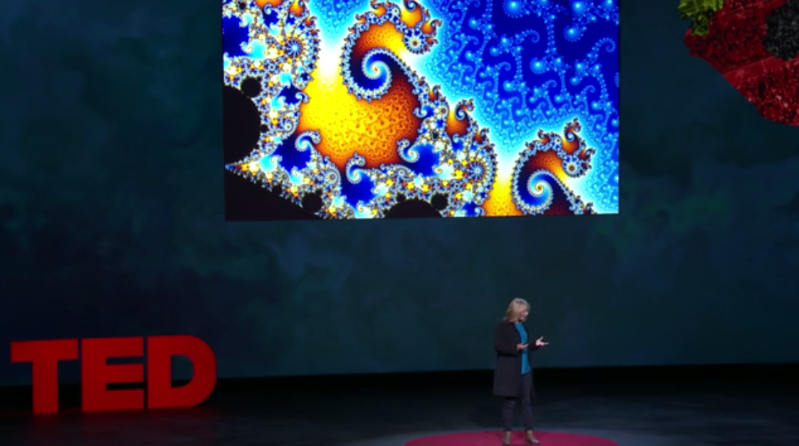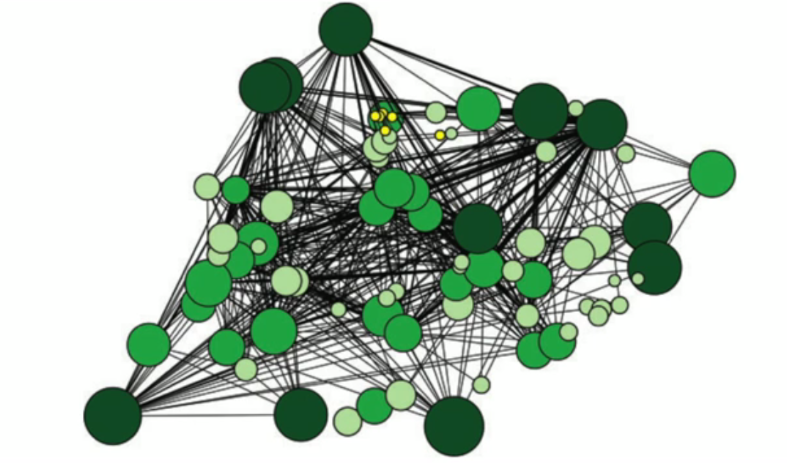It turns out that your imagination isn't at wild as you might believe; Trees do, in fact, talk.
However, as forest ecologist Suzanne Simard discovered through her research, this communication happens not in the air but deep below our feet in an incredibly dense, complex network of roots and chemical signals.
"Trees are the foundation of a forest, but a forest is much more than what you see," says Simard. "Underground, there is this "other" other world of infinite biological pathways that connect trees and allow them to communicate."
Using 80 replicas of trees (birch, Douglas firs and other species), Simard observed the amazing interactions between different clusters of trees, noting that their relationships were dependent on factors such as proximity and how much shade they received on a given day. She found that trees were not competing but collaborating, sending things like carbon, water, nitrogen, phosphorus and even distress signals throughout their group as needed.
"The great thing about forests," says Simard, "is that as complex systems, they have an enormous capacity to self-heal."
One of the most incredible, visceral facts that Simard unearthed was the role of "mother" trees in these ecological communities. These more mature trees acts as hubs or anchors for tree groupings, and look after their families, nurturing seedlings and even sharing wisdom when they are injured or dying.
"In a single forest, a mother tree may be connected to hundreds of other trees," she says.
On the TEDSummit stage, Simard shared her life's work, this monumental evidence that may hopefully change some decision-making behind our terrible forest-clearing habits and instill in us the idea that, like humans and most living things, trees build families, form relationships and thrive best when surrounded by a diverse community of species and genotypes.
"You can take out one or two hub trees, but there's a tipping point," says Simard. "You take out one too many and the whole system collapses."
To protect of forests, their livelihoods, and ultimately ours, we must reconnect with nature and save our old-growth forests, to regenerate and reinforce their strength as they deal with ever-looming threat of climate change.
Suzanne Simard's TED talk
A professor of forest ecology at the University of British Columbia's Department of Forest and Conservation Sciences in Vancouver, Suzanne Simard studies the surprising and delicate complexity in nature. Her main focus is on the below-ground fungal networks that connect trees and facilitate underground inter-tree communication and interaction. Her team's analysis revealed that the fungi networks move water, carbon and nutrients such as nitrogen between and among trees as well as across species. The research has demonstrated that these complex, symbiotic networks in our forests -- at the hub of which stand what she calls the "mother trees" -- mimic our own neural and social networks. This groundbreaking work on symbiotic plant communication has far-reaching implications in both the forestry and agricultural industries, in particular concerning sustainable stewardship of forests and the plant's resistance to pathogens. She works primarily in forests, but also grasslands, wetlands, tundra and alpine ecosystems.





They are called 'TreePeople'
"You can take out one or two hub trees, but there's a tipping point," says Simard. "You take out one too many and the whole system collapses."
Obviously, just like throwing a gallon of paint (example) into a lake or 5000. The waters will clear out the gallon... and choke on the 5000.